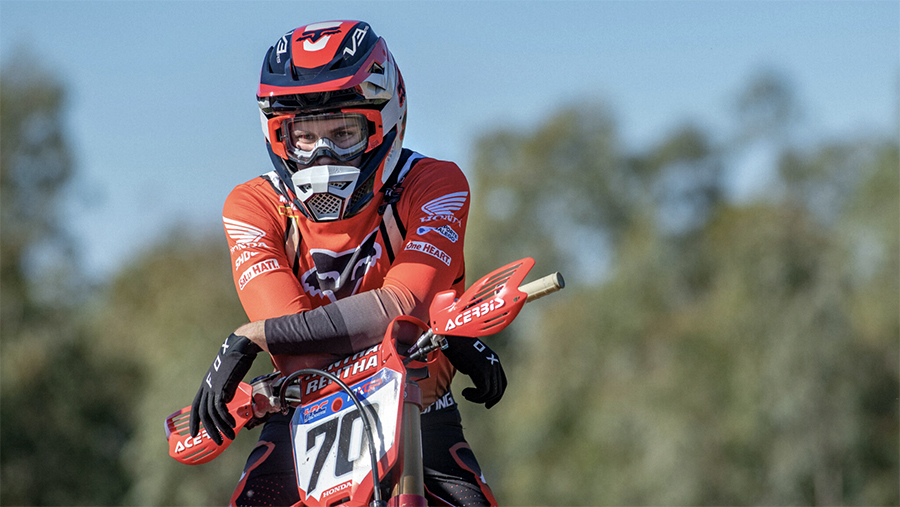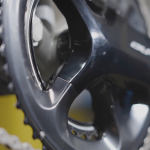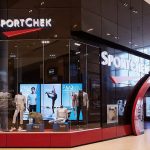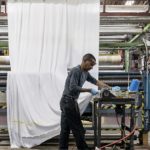Mips AB President and CEO Max Strandwitz said he was pleased with the company’s 12 percent organic growth in the second quarter despite “very challenging” conditions brought on by the tariff situation in the U.S. which created “significant uncertainty” in the market.
“In early April, the imposition of high tariffs on goods imported into the U.S. was announced,” Strandwitz explained in a letter to investors and media. “The tariff package was extensive and larger than most people had expected, creating uncertainty in all our customer categories and cautious purchasing behavior among our customers, the helmet brands. As much of the rhetoric centered on China, where most helmets are currently produced, many factories had to reduce production significantly. As the brands gained more clarity, they communicated price increases to mitigate the impact of tariffs. These were relatively well received by retail and consumers, and thereby the helmet brands started producing helmets at their suppliers again. As a result, we saw an acceleration in the end of the quarter, but sales did not reach the growth we saw in the previous quarter.”
The Sweden-based maker of helmet protection technologies reported net sales increased 1 percent to SEK 135 million in the 2025 second quarter, compared to SEK 133 million in Q2 2024, due to currency fluctuations. Organic growth was pegged at 12 percent in the quarter. The U.S. dollar had a negative 8 percent impact on reported sales and the Chinese yuan had a negative 4 percent impact. While strong organic growth was exhibited, the quarter fell short of the very strong 42 percent growth posted in the 2025 first quarter.
Strandwitz said the economic impact of the tariffs on the Mips business in the quarter was less than initially expected when the tariff levels were introduced in early April.
“There are several reasons for this,” he explained. “Mips, as a brand, has a very strong position in the U.S. market with broader coverage in terms of both brands and price points. We have also achieved higher penetration in other parts of the world, and, additionally, our customers were more prepared on how to act towards the consumers than when specific tariffs were introduced on, among other things, bicycle-related products at the end of 2019. The impact on our sales was also smaller than what we saw in 2019, which was the first time larger increases of tariffs were imposed.”
For Mips as a company, the tariffs have not resulted in increased costs, and the company has not needed to implement tariff-related price increases.
“We sell all our products based on Incoterms Ex Works, which means that the buyer is responsible for all transport costs, including tariffs,” Strandwitz noted.
“We have, during the last months, seen a flurry of activity from many helmet brands to relocate large parts of their helmet production outside China in order to reduce dependency on individual countries,” he continued. “This does not have a negative long-term impact on Mips, but it does mean that our customers are currently very focused on ensuring that their relocation is as smooth as possible. This operational focus on goods supply means a certain shift in attention from more sales-driven initiatives from their side.”
The CEO said the company saw “somewhat lower activity” in the number of projects during the quarter, as many of its customers focused their resources on relocating production. “We believe that it will take a quarter or a few before they can focus on product development of new products again,” Strandwitz said.
Still, he said the company continues to see strong interest in Mips globally and he sees a positive trend among brands that implement Mips in new helmet models in relatively new markets for the brand.
Region Summary
The company’s revenue centers on customers in North America and Europe. The company explains the substantial concentration of sales in North America by the large number of helmet manufacturers based in this geographical region. Specification by region is based on customers’ domicile and not distribution.
North America reported an 8.3 percent decline in Q1 to SEK 63 million, while Europe saw growth of 43.3 percent to SEK 43 million, and Sweden remained flat at SEK 14 million. Asia and Australia declined as a region to SEK 12 million in Q2, compared to SEK 17 million in Q2 2024.
Category Summary
Helmet Category | Sports
Mips saw continued good progress in the Sports category despite challenging conditions. The company achieved growth of 3 percent to SEK 125 million in the category in Q2, and for the seventh consecutive quarter, the company delivered growth in volumes in the Bike sub-category, its largest sub-category. The Sports category represented 92.6 percent of total sales in the second quarter.
In conjunction with the world’s largest bike trade fair, Eurobike, the company launched the Mips Air Node Pro, an evolution of its lightest solution with enhanced product features.
“The product was very well received,” Strandwitz noted. “We also launched our new trade fair and event concept, a mobile concept that can be used both at trade fairs and at consumer events in the future. This is fully in line with our strategy to increase our exposure to consumers in order to raise awareness of Mips around the world.”
The CEO said Mips also continued to see a “stable development” in the Snow sub-category in the quarter, despite a very strong performance in the prior-year quarter. He said growth continues to be driven by market share gains in the U.S. market and a “satisfactory increase” in penetration in Europe.
Helmet Category | Motorcycle
In the Motorcycle category, sales decreased 28 percent, the second quarter to SEK 6 million. The company reported that the sales decrease was “entirely related to the postponement of orders due to the tariff situation in the U.S. market being important for this category.” Strandwitz said the company’s view of the trend in this category remains positive.
“We are pleased to have announced partnerships with two prominent motorsport athletes during the quarter,” Strandwitz shared. “The first is Jorge Prado, double world champion and last year’s MXGP winner. This year, he is taking on Supercross on the American continent, which is exciting to be part of. The other athlete is Joan Mir, also a world champion but in MotoGP. He is an important part of our efforts to establish ourselves more strongly in the sub-category on-road. Both of these athletes are extremely strong additions to our motorsport program and will help us raise awareness of Mips around the world.”
Helmet Category | Safety
Postponement of sales due to tariffs
In the Safety category, Mips posted a 12 percent increase in sales to SEK 5 million. The lower growth rate compared to previous quarters was attributed to U.S. tariffs. “These created uncertainty for our customers, especially regarding what the consequences will be for pricing to users, and the impact on agreed contracts,” Strandwitz noted. “We see this as only temporary, and our ambition in the Safety category remains.”
Profitability and Expenses
Mips saw a decrease in operating profit in the quarter, which Strandwitz said was fully explained by legal costs and effects of exchange rate differences. The company experienced a positive trend in the gross margin, which amounted to 74.2 percent of sales in Q2, a 130 basis-point improvement from the 72.9 percent margin in Q2 last year.
Operating profit amounted to SEK 41 million in the second quarter, compared to SEK 52 million in the year-ago Q2 period.
The operating cash flow in the quarter amounted to SEK 18 million, compared to SEK 29 million in Q2 2024.
Outlook
Despite challenging conditions and a turbulent second quarter, Strandwitz said the company looks forward to the rest of the year with confidence.
“We have strong momentum in the market, and we have a wider and stronger product range than ever,” he said. “Our customers have navigated this environment well, and most of them have made the necessary price increases to cope with cost increases due to the imposition of tariffs. Retail has responded well to the price increases, but it is difficult to assess how the short-term effects will impact consumers.”
He said they are convinced that helmet use will increase worldwide over time and that Mips will continue to gain market share. “Our ambition is to keep on growing and investing in our business, regardless of the external situation,” he shared. “We have a unique brand position in the helmet industry, broad expertise, and patented technology. As a result, I continue to look forward to an exciting but challenging 2025, with a stronger market position than ever for Mips.”
Image courtesy Mips AB
















